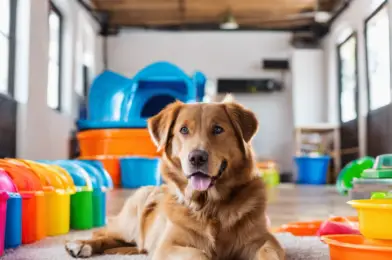Managing a dog daycare facility is a challenging task, especially as the popularity of dog daycare services continues to soar. Pet owners increasingly seek convenient and reliable options to ensure their furry friends receive the best care while they’re away. In this fast-paced industry, technology offers innovative solutions to streamline operations, enhance customer satisfaction, and improve overall efficiency. By leveraging various tech tools, dog daycare businesses can simplify their daily tasks, improve safety measures, and ultimately, provide top-notch care for their canine clients.
One of possible solutions lies in specialized daycare management software, which acts as a central hub for all operations. This software enables daycare owners to manage and track important information such as client and pet details, scheduling, attendance, and billing. It eliminates the need for manual record-keeping and reduces the risk of errors, ensuring that all data is organized and readily accessible. For instance, features like automated scheduling systems streamline the booking process, allowing customers to book appointments online or through a user-friendly app, saving time and enhancing the overall customer experience. This integration of technology not only improves efficiency but also allows staff to focus more on providing quality care for the dogs.
Furthermore, the use of RFID (Radio-Frequency Identification) technology takes safety and efficiency to the next level. Daycare centers can equip each dog with collars or tags containing RFID chips, linking them to the central database. These devices can track a dog’s location within the facility, monitor their attendance, and even control access to secure areas. This technology is invaluable for ensuring the safety of each pet and providing real-time updates to owners, fostering trust and peace of mind.
Implementing digital health monitoring systems is another way technology can enhance dog daycare operations. Wearable devices can track vital signs, activity levels, and other health indicators, offering valuable insights into a dog’s well-being. These devices can immediately alert staff to any potential health concerns, allowing for prompt action and ensuring every dog receives the care they need.
In addition to these operational improvements, technology also plays a role in fostering community engagement. Daycare centers can create online platforms or social media groups where pet owners can connect, share experiences, and stay updated on their dogs’ activities. This sense of community strengthens the bond between pet owners and the daycare, encouraging customer loyalty and attracting new clients.
The introduction of smart cameras adds another layer of value. These cameras can be used to create adorable photo or video updates that can be shared with pet owners, providing a glimpse into their dog’s day. These visual updates are not only fun for the owners but also serve as a promotional tool, showcasing the daycare’s services and unique offerings.
By adopting these technology solutions, dog daycare businesses can elevate the quality of their services, improve customer satisfaction, and stay competitive in the booming pet care industry. Through efficient management systems, safety measures, and innovative engagement tools, technology becomes an invaluable asset in ensuring a thriving and trusted dog daycare business.
The benefits of technology in this industry are undeniable, providing efficiency, safety, and enhanced customer engagement. As technology continues to advance, dog daycare operations can look forward to an even more streamlined future, ensuring that every wagging tail is met with the best possible care.
In conclusion, embracing technology in dog daycare management is no longer a luxury but a necessity. It transforms the way daycares operate, leading to improved efficiency, safety, and customer satisfaction. By leveraging the right tools, dog daycare businesses can provide unparalleled services, ensuring happy and healthy dogs and ultimately, delighted owners. Investing in these solutions is an investment in the future of the industry, setting a new standard of care for our beloved canine companions.










